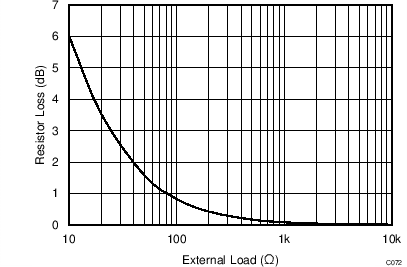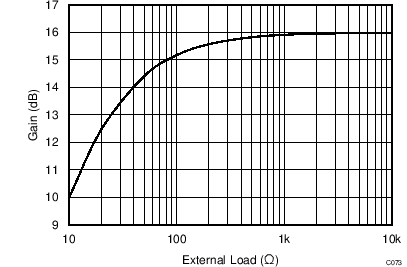JAJSEU5D October 2014 – February 2018 LMH5401
PRODUCTION DATA.
- 1 特長
- 2 アプリケーション
- 3 概要
- 4 改訂履歴
- 5 Pin Configuration and Functions
-
6 Specifications
- 6.1 Absolute Maximum Ratings
- 6.2 ESD Ratings
- 6.3 Recommended Operating Conditions
- 6.4 Thermal Information
- 6.5 Electrical Characteristics: VS = 5 V
- 6.6 Electrical Characteristics: VS = 3.3 V
- 6.7 Typical Characteristics: 5 V
- 6.8 Typical Characteristics: 3.3 V
- 6.9 Typical Characteristics: 3.3-V to 5-V Supply Range
- 7 Parameter Measurement Information
- 8 Detailed Description
-
9 Application and Implementation
- 9.1 Application Information
- 9.2 Typical Application
- 9.3 Do's and Don'ts
- 10Power Supply Recommendations
- 11Layout
- 12デバイスおよびドキュメントのサポート
- 13メカニカル、パッケージ、および注文情報
9.2.3 Application Curves
The LMH5401 has on-chip series output resistors to facilitate board layout. These resistors provide the LMH5401 extra phase margin in most applications. When the amplifier is used to drive a terminated transmission line or a controlled impedance filter, extra resistance is required to match the transmission line of the filter. In these applications, there is a 6 dB loss of gain. When the LMH5401 is used to drive loads that are not back-terminated there is a loss in gain resulting from the on-chip resistors. Figure 76 shows that loss for different load conditions. In most cases the loads are between 50 Ω and 200 Ω, where the on-chip resistor losses are 1.6 dB and 0.42 dB, respectively. Figure 77 shows the net gain realized by the amplifier for a large range of load resistances when the LMH5401 is configured for 16-dB gain.
 Figure 76. Gain Loss Resulting from On-Chip Output Resistors
Figure 76. Gain Loss Resulting from On-Chip Output Resistors
 Figure 77. Net Gain versus Load Resistance
Figure 77. Net Gain versus Load Resistance